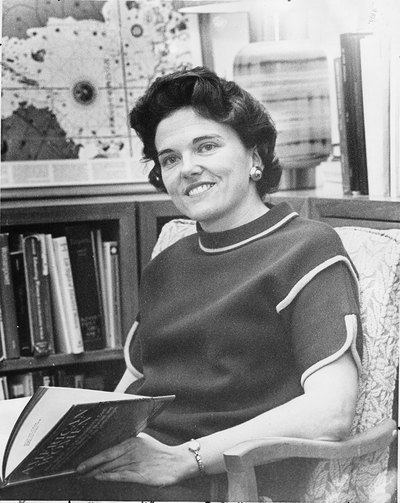For much of this institution’s history, positions of power for female leaders were largely confined to two positions: Dean of Home Economics and Dean of Women.
OSU’s Home Economics program was first west of the Rockies, and fourth earliest among land grant institutions. As the only female-dominant academic discipline, women were central to the program’s evolution: Household Sciences and Hygiene (1889), School of Domestic Science and Art (1908), School of Home Economics (1914), College of Home Economics (1983).
In 1889, Dr. Margaret Comstock Snell became the first Professor of Household Science and Hygiene; until her retirement in 1908, she was an advocate for good health and "apostle of fresh air." Ava Milam Clark was a professor and head of Department of Domestic Science (1911-1924) and Dean of Home Economics (1917-1950) – note the overlap in years – and was a consultant to programs in China, Japan, Korea, Iraq, and Syria. Juliet Greer was the first Dean of the School of Domestic Science and Art (1908-1911), and 90 years later Clara Pratt became the last Dean of College of Home Economics and Education (2001-2002).
Compared to Home Economics, the Dean of Women had a different set of responsibilities: she was adjudicator, disciplinarian, confidant, and exemplar for the entire female student body. Indeed, so far reaching were her powers that some women believed they needed her permission to accept a proposal of marriage.
Ellen J. Chamberlin was “Lady Dean” in 1899; the following year she became the first Dean of Women, and also taught German classes. One of the more influential Deans of Women was Kate Jameson, who served from 1924 to 1941. Responsible for creating the Associated Women Students, Jameson also founded what is now known as OSU Family Day. The last Dean of Women at OSU was Jo Anne Trow, who served from 1965 to 1969. She was subsequently named Associate Dean of Students, a position created as part of campus-wide infrastructure reorganization.
Throughout the 1970s Trow and other women moved into higher administrative roles and pressed for change. In 1973, Jeanne Dost, an Economics professor, became the first head of the OSU Women’s Center; five years later she succeeded in formalizing a Women’s Study minor. Sylvia Moore was a tireless advocate for women athletes, and led the Athletic Department through a difficult transition towards gender parity following the implementation of Title IX. Pearl Spears Gray, affirmative action officer from 1976 to 1987, assisted with this transition and many others related to equity on campus. Miriam Orzech was hired as the director of OSU’s Educational Opportunities Program in 1974, and later founded the Science/Mathematics Investigative Learning Experiences program. In the early 1990s, Phyllis Lee became the first director of OSU’s Office of Multicultural Affairs.

